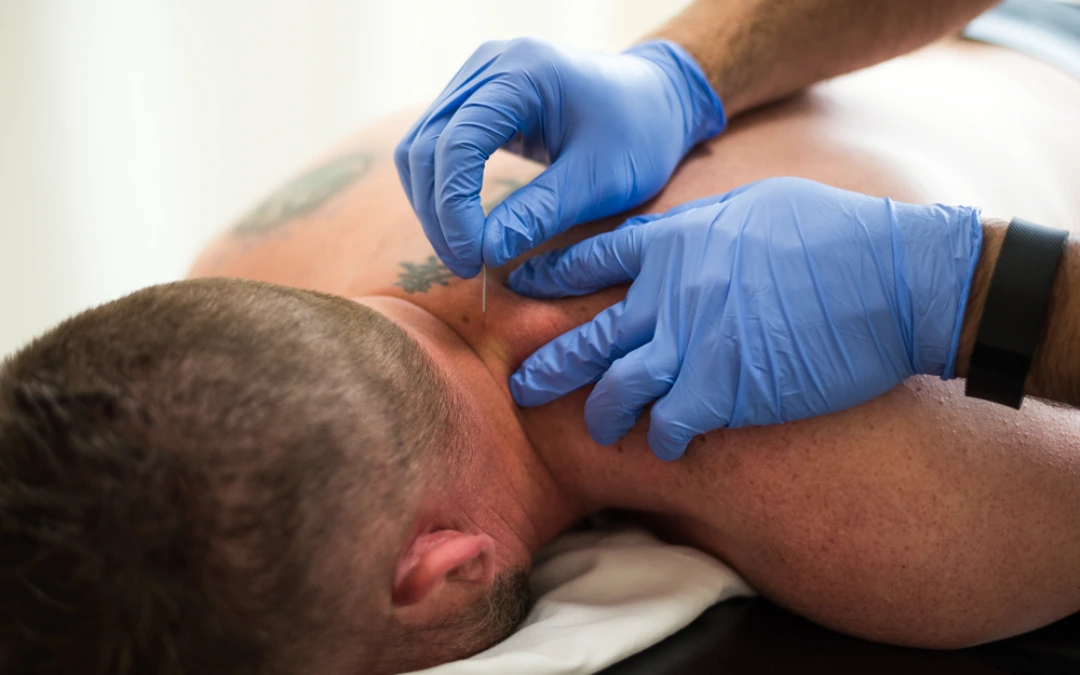By: Clayton Hunter, PT, DPT, OCS, CSCS
Finding relief for pain can seem like an unrelenting task. You may have tried a new mattress, a new pillow, a new desk, a new chair, and so on. You may have even found some relief with these things- which is great! Dry needling is among these interventions that can help you find pain relief.
Dry needling utilizes fine needles that are inserted in your skin to your muscles to target sensitive areas of muscle tissue- or trigger points- and stimulate them.
How Dry Needling Works
Under the microscope, dry needling causes microdamage to your muscle tissues, which increases blood flow to the area of treatment. This, in turn, induces a healing response to your body to naturally heal itself.
Functionally, by stimulating trigger points, you reduce both your central and peripheral sensitization to pain. Overall, there is a reduction of pain by raising your pain threshold. It improves your ability to withstand your pain, which results in a better range of motion and decreased muscle tightness and pain.
Dry needling may not be for you if you are/ had:
- Using blood thinners,
- Surgery within the last 3 months,
- At high risk for pneumothorax (collapsed lung)
- Prone to infections, or
- Diabetic.
The needles are fine enough to not cause damage to your skin, but treatment may cause bruising to the treated area. The treatment may cause residual soreness, but also, keep in mind if you are sensitive to needles, you may want to either avoid this treatment or talk to your dry needling certified physical therapist to see if it is right for you.
Dry Needling Techniques
There are various dry needling techniques that practitioners utilize. Pistoning is one where the clinician will search out trigger points, and, once they locate it, they may decide to get the twitch response in the area by physically moving the needle repeatedly until the trigger point dissipates.
Another method is to insert the needle into the trigger point and attach an electrode to it to send an electrical impulse through the tissue. This achieves a similar result but with less microtears to the tissue- which can result in reduced soreness.
Before you get Dry Needled
Before receiving dry needling for the first time, we will have an initial assessment with you. It is absolutely vital to have your full health history and your goals to see if dry needling is an appropriate treatment for you and aligns with what you need. In the assessment, we may see that another technique may be more beneficial for you or that you may need another specialist before beginning physical therapy.
Dry needling on its own cannot give you permanent pain relief.
It is the hard work and effort day after day that may bring you relief. Pairing dry needling with prescriptive exercise from your physical therapist is going to be more powerful for you in the short and long term. You may find some short-term relief from your pain with dry needling, but, for lasting results, it needs to be paired with exercises that stretch and/ or strengthen your muscles specifically to help you move and feel your best.
Schedule an appointment with a Spooner therapist today to see if dry needling is right for you!

